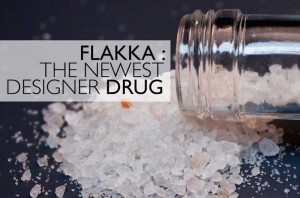Analysis of Postmortem Specimens
Strict Liability vs Causation
Florida had a strict liability DUI manslaughter statute until 1986. All the state needed to prove was that the defendant was driving while impaired, was involved in a car accident and somebody died as a result of the car accident. It did not matter if the defendant was at fault for the accident. The legislature amended the DUI manslaughter statute in 1986 to include the element of causation.
Constitutional Issue with Strict Liability
The problem with the strict liability DUI manslaughter statute, in my opinion, was that the criminal culpability for a misdemeanor DUI and the criminal culpability for a DUI manslaughter was equal. A good argument could be made that the strictly at liability DUI manslaughter statute violated the 8th Amendment of the United States Constitution as a cruel and unusual punishment. The current DUI manslaughter statute requires the state to prove the following: 1) driving under the influence; 2) an accident resulting in death and 3) and that the defendant was somehow at fault for the accident. The causation element must be proved independent of impairment.
Not My Fault Defense
Defending DUI manslaughter cases is difficult under any circumstances. It is human nature to look for somebody to blame when somebody dies before their time. It is also human nature to not speak ill of the dead. However, a legally viable defense to DUI manslaughter is that the decedent was at fault for the accident even though the defendant was driving drunk. The defendant would be guilty of DUI, but not DUI manslaughter in that scenario. The “not my fault defense” is a particularly difficult proposition to sell to a jury. In essence, you are saying to the jury “Yes, my client was driving drunk. Yes, my client was involved in a fatal car accident. However, the car accident was the dead guy’s fault.”
Theory vs. Reality
Nobody ever gets screwed by the law in a bar exam essay question. However, this is not a law school exam question. Defense attorneys need to stop thinking about legal theory and focus on where the rubber meets the road. Technically, the defense bears no burden of proof, but if this is your defense, you are going to need to show some solid evidence. The jury is looking to blame somebody and there is a good chance that it is going to be the defendant and also you could get a Dui Lawyer Orlando to help you rest your case, so everything is easier. Personally, I wouldn’t want to use this defense if it did not have a strong factual basis. The risk of alienating the judge and jury by blaming the victim without any serious basis is too great.
Where to Find the Evidence
The autopsy report from the County Medical Examiner’s Office is a valuable source of information for the defense. Please note that the Medical Examiner’s Office may be called something different in another state. Biological specimens, such as blood and urine, are preserved during the course of an autopsy. Toxicology testing is performed on the specimens. The results of the toxicology tests may show that the was under the influence of some sort of drug or alcohol at the time of the accident.
It should be relatively easy to establish whether the decedent was under the influence of a drug at the time of the accident. The postmortem blood sample will identify the drugs in his or her system at the time of death. Postmortem quantitative analysis of controlled substances in a decedent’s blood is another topic for another time. The biggest problem that defense attorneys run into when trying to evaluate the culpability of the decedent is the quantitative analysis of ethyl alcohol in the decedent’s blood.
No matter what methods are used, using the BAC at the time of autopsy in order to determine the decedent’s impairment at the time of the accident is an educated guess at best and gross speculation at worst. The reason for the uncertainty is because alcohol can be produced or destroyed in between the time of death in the time of the autopsy. Autolysis is defined as the self digestion or destruction of an organism’s own cells through the action of its own enzymes. This begins to occur within hours of an individual’s death and his present throughout the vast majority of the vascular system within hours. The result is an environment which supports the endogenous production of alcohol. Multiple environmental factors contribute in determining if endogenous alcohol is produced or the extent of the endogenous production. The two most significant are typically time and temperature.
Postmortem BAC Testing is Never Ideal
We obviously want the BAC to be as accurate as possible. In an ideal world we would like to have a blood sample taken from the decedent as soon as possible after the accident and a second blood sample taken 45 minutes to an hour after the first blood sample with both being prior to death. If that is the case, we would probably not need to use the postmortem sample.
If possible, the first thing that the defense attorney should do is check the decedents medical records in order to determine if a BAC screen was ordered by a doctor at the hospital. You may have to request a subpoena duces tecum if the medical evidence from the hospital is not provided in discovery. Sometimes individuals die on the scene or on their way to the hospital so this is not always available. If there is no antemortem sample, the defense attorney has to be able to assess the reliability of the autopsy sample.
Additional Reading
Postmortem analysis of biological specimens for ethyl alcohol is very complicated. Try as I might, I cannot say it any better than it is said on this website: BAC Analysis in Postmortem Specimens. Another good website for forensic science in general is The Truth About Forensic Science
Remember that it is the State’s burden to prove that the defendant was at fault for the accident. If you can put on strong evidence that the decedent was impaired it is up to the State to rebut that. There are simply too many variables for the toxicologist to credibly testify as to a definitive state of impairment at the time of the accident.
For more information, please contact us at:
The Law Offices of Michael A. Dye, PA, 1 East Broward Boulevard #700, Fort Lauderdale, FL 33301 (954)990-0525 or
The Law Offices of Michael A. Dye, PA, 2 S Biscayne Blvd, Miami, FL 33131 (305)459-3286





